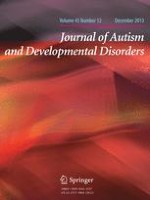01-12-2013 | Original Paper
Cognitive Enhancement Therapy for Adults with Autism Spectrum Disorder: Results of an 18-month Feasibility Study
Gepubliceerd in: Journal of Autism and Developmental Disorders | Uitgave 12/2013
Log in om toegang te krijgenAbstract
Adults with autism experience significant impairments in social and non-social information processing for which few treatments have been developed. This study conducted an 18-month uncontrolled trial of Cognitive Enhancement Therapy (CET), a comprehensive cognitive rehabilitation intervention, in 14 verbal adults with autism spectrum disorder to investigate its feasibility, acceptability, and initial efficacy in treating these impairments. Results indicated that CET was satisfying to participants, with high treatment attendance and retention. Effects on cognitive deficits and social behavior were also large (d = 1.40–2.29) and statistically significant (all p < .001). These findings suggest that CET is a feasible, acceptable, and potentially effective intervention for remediating the social and non-social cognitive impairments in verbal adults with autism.
